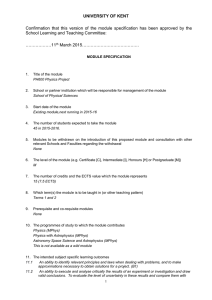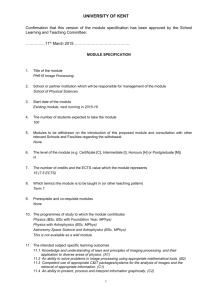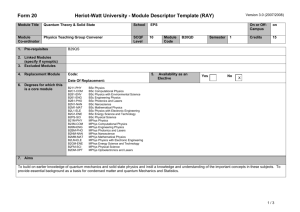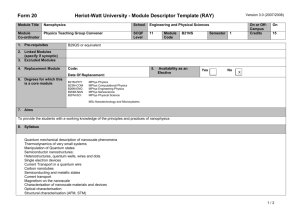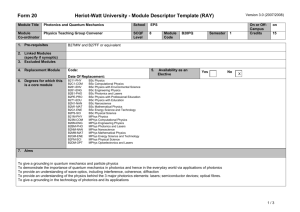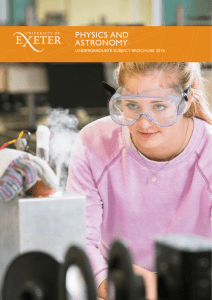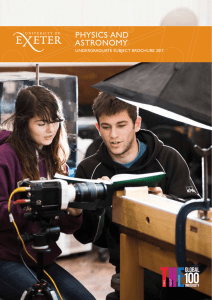PH502 Quantum Physics
advertisement
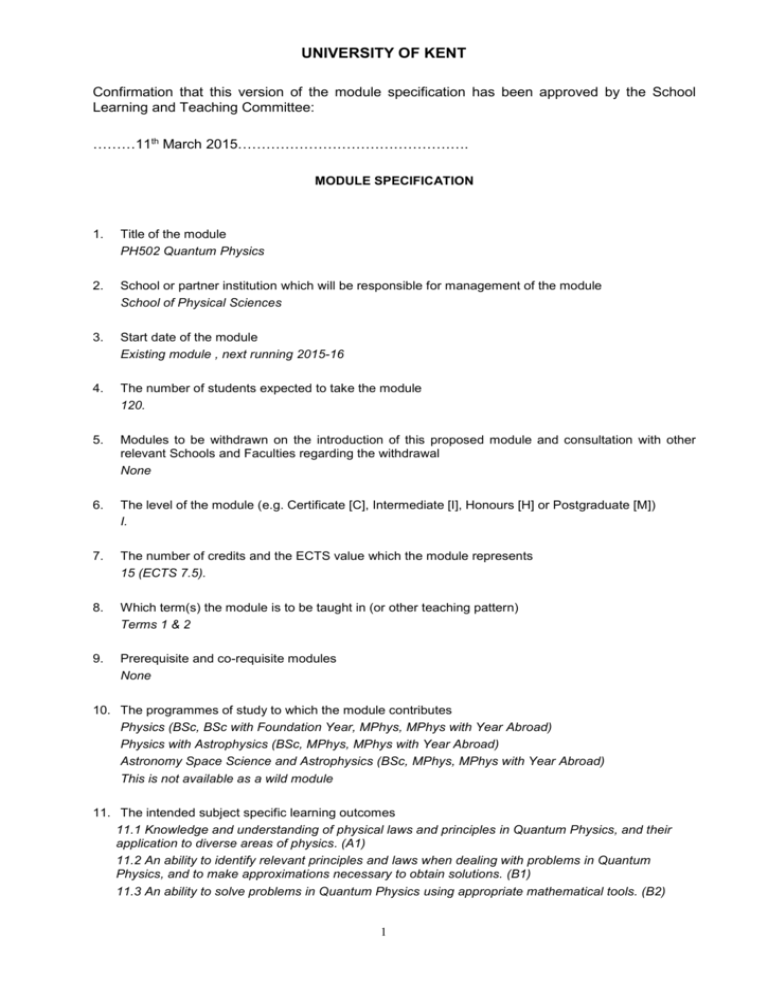
UNIVERSITY OF KENT Confirmation that this version of the module specification has been approved by the School Learning and Teaching Committee: ………11th March 2015…………………………………………. MODULE SPECIFICATION 1. Title of the module PH502 Quantum Physics 2. School or partner institution which will be responsible for management of the module School of Physical Sciences 3. Start date of the module Existing module , next running 2015-16 4. The number of students expected to take the module 120. 5. Modules to be withdrawn on the introduction of this proposed module and consultation with other relevant Schools and Faculties regarding the withdrawal None 6. The level of the module (e.g. Certificate [C], Intermediate [I], Honours [H] or Postgraduate [M]) I. 7. The number of credits and the ECTS value which the module represents 15 (ECTS 7.5). 8. Which term(s) the module is to be taught in (or other teaching pattern) Terms 1 & 2 9. Prerequisite and co-requisite modules None 10. The programmes of study to which the module contributes Physics (BSc, BSc with Foundation Year, MPhys, MPhys with Year Abroad) Physics with Astrophysics (BSc, MPhys, MPhys with Year Abroad) Astronomy Space Science and Astrophysics (BSc, MPhys, MPhys with Year Abroad) This is not available as a wild module 11. The intended subject specific learning outcomes 11.1 Knowledge and understanding of physical laws and principles in Quantum Physics, and their application to diverse areas of physics. (A1) 11.2 An ability to identify relevant principles and laws when dealing with problems in Quantum Physics, and to make approximations necessary to obtain solutions. (B1) 11.3 An ability to solve problems in Quantum Physics using appropriate mathematical tools. (B2) 1 UNIVERSITY OF KENT 11.4 An ability to use mathematical techniques and analysis to model physical behaviour in Quantum Physics. (B4) 11.5 An ability to present and interpret information graphically. (C2) 11.6 An ability to make use of appropriate texts, research-based materials or other learning resources as part of managing their own learning. (C6) 12. The intended generic learning outcomes 12.1 Problem-solving skills, in the context of both problems with well-defined solutions and openended problems. Numeracy is subsumed within this area. (D1) 12.2 Analytical skills – associated with the need to pay attention to detail and to develop an ability to manipulate precise and intricate ideas, to construct logical arguments and to use technical language correctly. (D4) 13. A synopsis of the curriculum Revision of classical descriptions of matter as particles, and electromagnetic radiation as waves. Some key experiments in the history of quantum mechanics. The concept of wave-particle duality. The wavefunction. Probability density. The Schrodinger equation. Stationary states. Solutions of the Schrodinger equation for simple physical systems with constant potentials: Free particles. Particles in a box. Classically allowed and forbidden regions. Reflection and transmission of particles incident onto a potential barrier. Probability flux. Tunnelling of particles. The simple harmonic oscillator as a model for atomic vibrations. Revision of classical descriptions of rotation. Rotation in three dimensions as a model for molecular rotation. The Coulomb potential as a model for the hydrogen atom. The quantum numbers l, m and n. The wavefunctions of the hydrogen atom. Physical observables represented by operators. Eigenfunctions and eigenvalues. Expectation values. Time independent perturbation theory. 14. Indicative Reading List Quantum mechanics – Bransden, B. H., Joachain, C. J., 2000 Quantum mechanics: concepts and applications – Zettili, Nouredine 2009 Introduction to the structure of matter – Brehm, John J., Mullin, William J. 1989 Quantum mechanics – Rae, Alastair I. M. c2008 University Physics: with Modern Physics – Young, H., Freedman, R., Sears, F. & Zemansky,M. 2000 Basic Quantum Mechanics – Cassels. J.M. 1982 50 Quantum Physics Ideas You Really Need to Know – Baker, J. 2013 The New Quantum Universe – Hey, A.J.G., Walters, P. 2003 15. Learning and Teaching Methods, including the nature and number of contact hours and the total study hours which will be expected of students, and how these relate to achievement of the intended module learning outcomes Contact hours: lectures (30 hours), workshops/revision sessions (3 hours) Total study time 150 hrs (including private study time) Achievement of module learning outcomes: Lectures and workshops (11.1-11.5, 12.1, 12.2) Self-study (11.1-11.6, 12.1, 12.2) 16. Assessment methods and how these relate to testing achievement of the intended module learning outcomes Coursework 30% including class tests 2 UNIVERSITY OF KENT Final (written, unseen, length 2 hours) exam 70% The above assessments test students’ knowledge and understanding of laws and principles (11.1, 11.2, 12.2) and application of techniques to model behaviour and solve problems (11.3-11.5, 12.1). In preparation for the assessments, students will need to manage their own studies using reference materials (11.6, 12.2) 17. Implications for learning resources, including staff, library, IT and space None 18. The School recognises and has embedded the expectations of current disability equality legislation, and supports students with a declared disability or special educational need in its teaching. Within this module we will make reasonable adjustments wherever necessary, including additional or substitute materials, teaching modes or assessment methods for students who have declared and discussed their learning support needs. Arrangements for students with declared disabilities will be made on an individual basis, in consultation with the University’s disability/dyslexia support service, and specialist support will be provided where needed. 19. Campus where module will be delivered: Canterbury. 3
